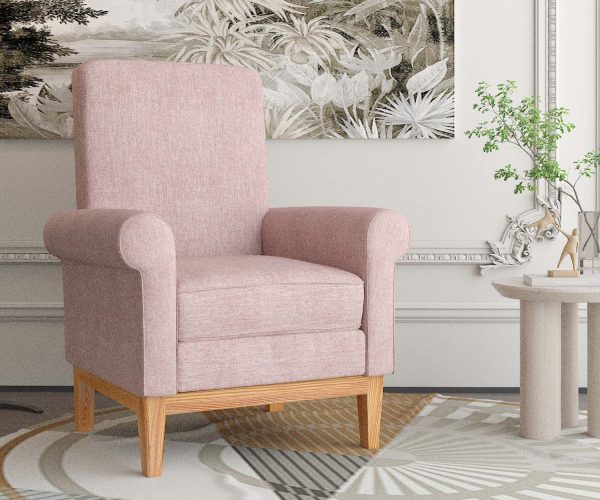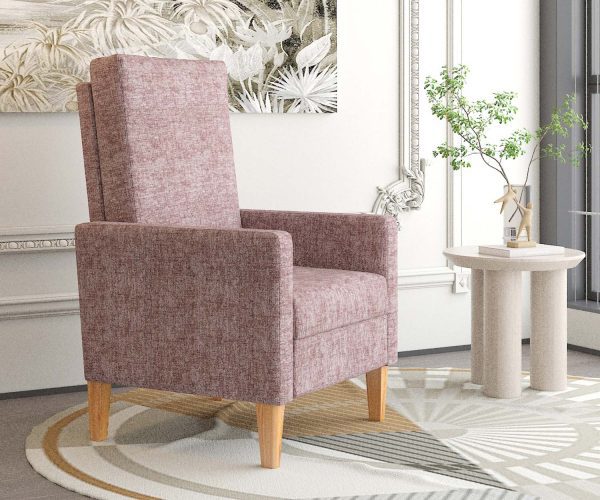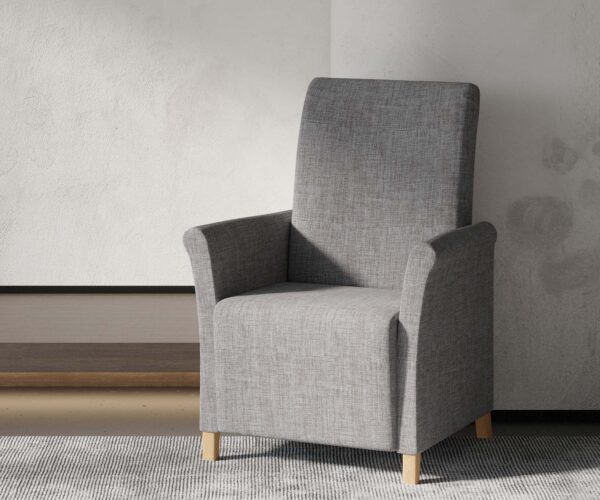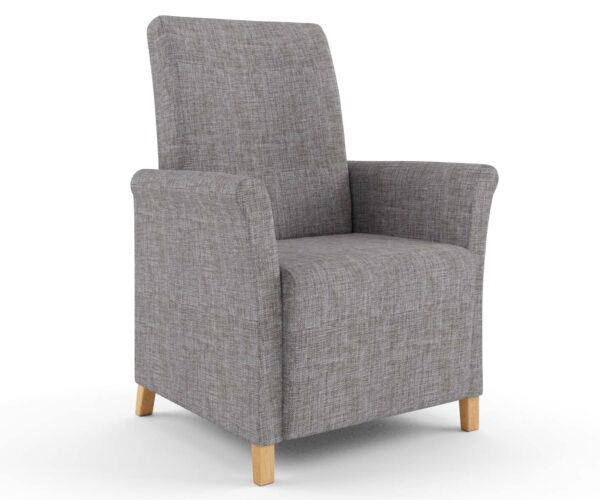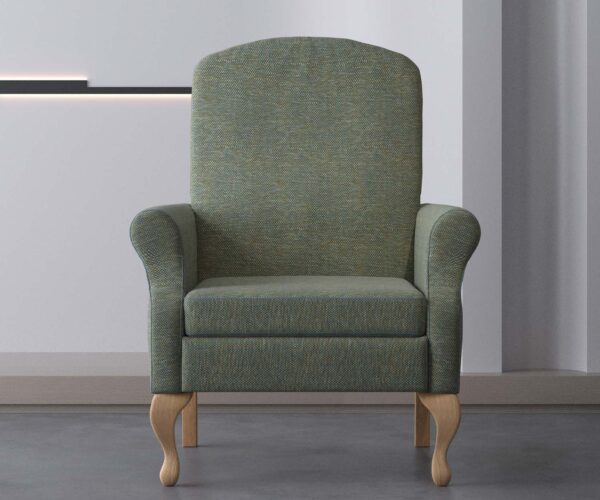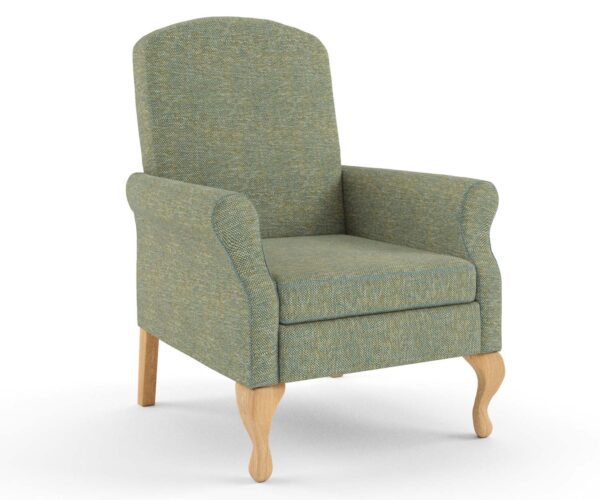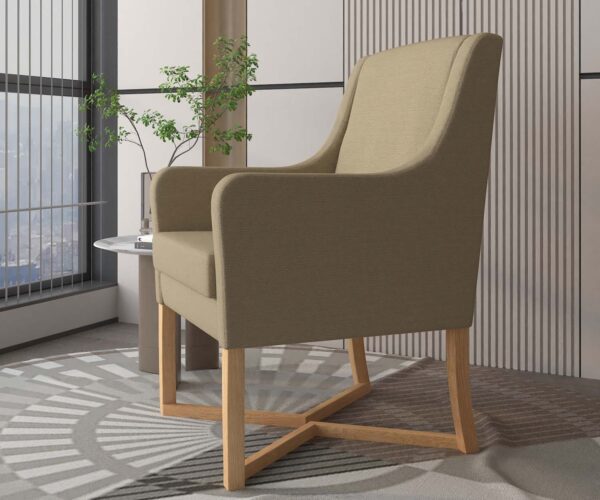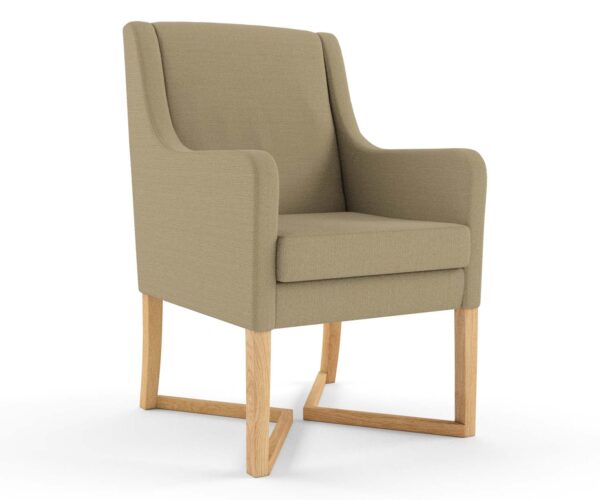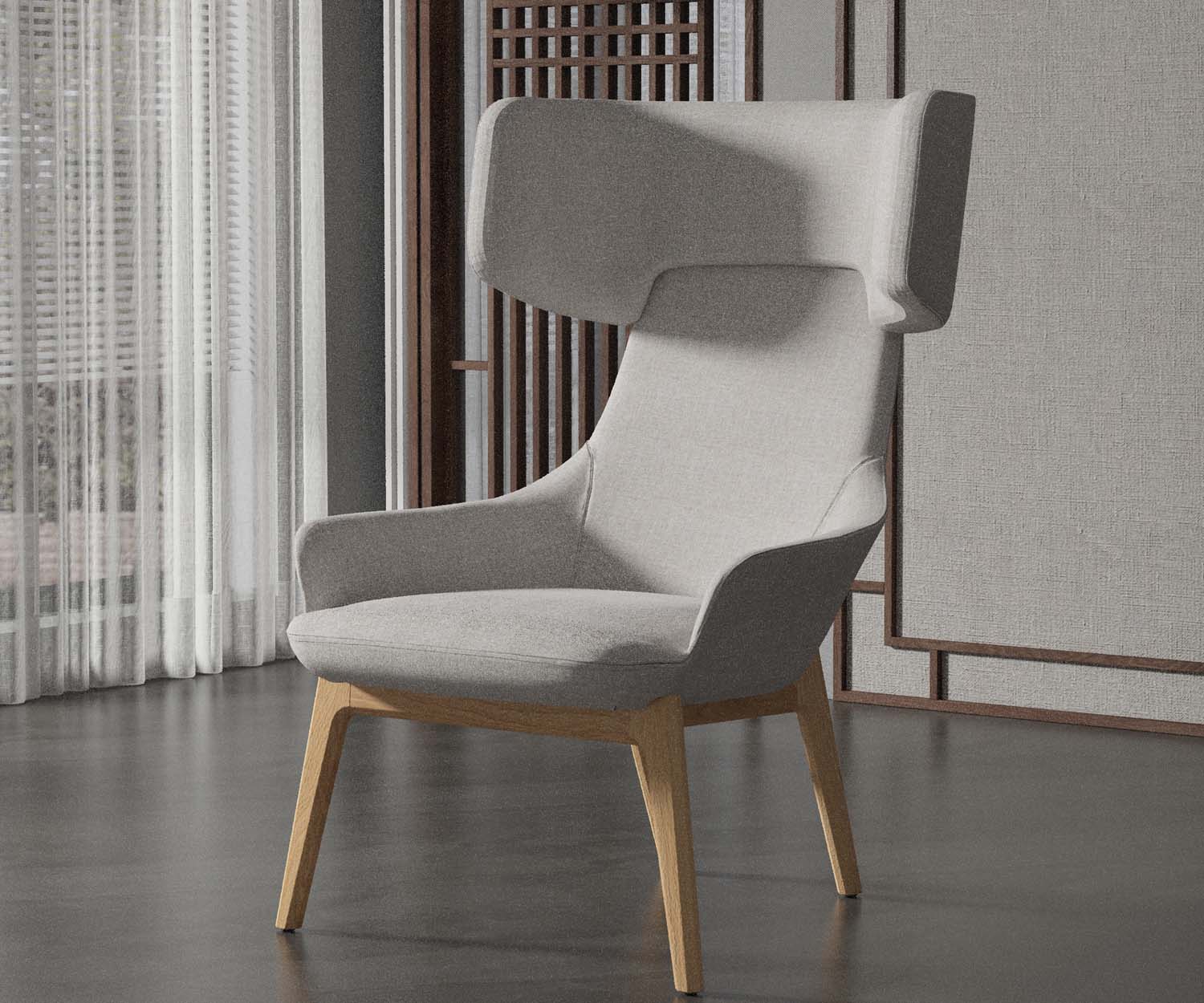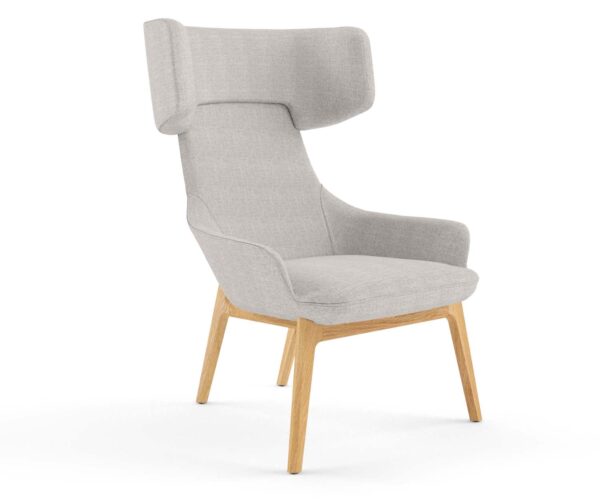Biophilic Design in Aged Care Facilities: Bringing Nature Indoors
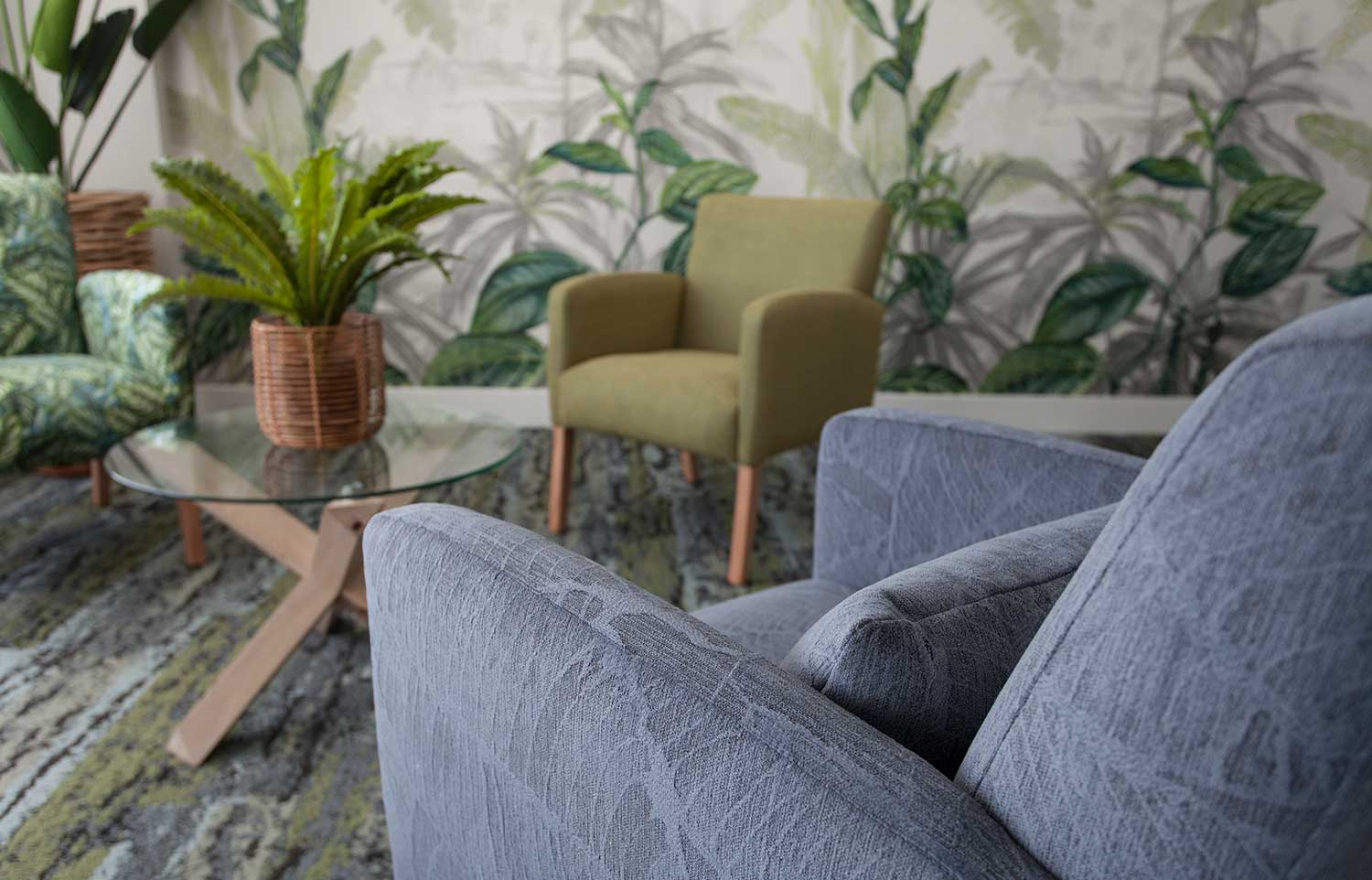
The concept of biophilic design in aged care, which emphasizes the integration of nature into the built environment, has gained significant momentum in recent years. This approach recognizes the profound impact of nature on human well-being and seeks to bridge the gap between the natural world and our increasingly urbanized lives. While biophilic design has found applications in various settings, including offices and homes, its principles are particularly relevant in aged care facilities.
Aged care facilities are places where residents often spend a substantial part of their lives. Creating an environment that promotes physical and psychological well-being is paramount, and biophilic design offers a framework to achieve this.
In this article, we will explore the principles and benefits of biophilic design in aged care facilities and the various ways in which nature can be brought indoors.
The Essence of Biophilic Design in Aged Care
Biophilic design, a term coined by Edward O. Wilson, is rooted in the idea that humans have an innate connection to nature. This connection is deeply ingrained in our evolutionary history, as our ancestors thrived in natural environments for millennia. Therefore, incorporating nature into our surroundings can have a profoundly positive impact on our physical, mental, and emotional well-being.
The principles of biophilic design include:
1. Natural Light and Views
A fundamental aspect of biophilic design is the use of natural light and the provision of views to the outdoors or even outdoor living areas with plenty of comfortable outdoor furniture. Large windows, skylights, and glass walls allow an abundance of natural light to flood interior spaces. Residents in aged care facilities benefit from increased exposure to daylight, which can improve mood, regulate sleep patterns, and enhance overall health.
2. Natural Materials
Biophilic design incorporates the use of natural materials like wood, stone, and water features. These materials create a sense of connection to the environment and stimulate our sensory perceptions. For aged care facilities, this can mean incorporating wooden furniture, stone accents, and indoor water features to add a touch of nature.
3. Indoor Plants
The introduction of indoor plants is a well-recognized feature of biophilic design. Plants not only enhance aesthetics but also contribute to improved air quality and emotional well-being. In aged care facilities, strategically placed indoor plants can provide residents with a sense of nature’s presence, even if they are unable to venture outdoors.
4. Nature-Inspired Patterns and Textures
Design elements such as patterns and textures inspired by nature, like leafy motifs and organic shapes, can evoke a sense of natural surroundings. Textured surfaces in aged care facilities can be reminiscent of nature, contributing to a more tactile and engaging environment.
5. Integration of Natural Systems
Biophilic design encourages the integration of natural systems, such as water features and airflow, to mimic natural environmental processes. The soothing sounds of water and the sensation of a gentle breeze can create a serene atmosphere in aged care facilities.
Benefits of Biophilic Design in Aged Care Facilities
The incorporation of biophilic design principles in aged care facilities yields a myriad of benefits, both for residents and the staff. Here are some of the key advantages:
1. Enhanced Well-Being
The exposure to natural elements, such as daylight, greenery, and natural materials, has been linked to reduced stress levels, improved mood, and overall well-being. In an environment as sensitive as an aged care facility, enhancing the well-being of residents is of paramount importance.
2. Improved Cognitive Function
Research has shown that biophilic design can enhance cognitive function, particularly in individuals with age-related cognitive decline. The presence of nature-inspired elements can stimulate memory and cognition, leading to a higher quality of life for residents.
3. Better Air Quality
The incorporation of indoor plants can improve indoor air quality by acting as natural air purifiers. Better air quality is especially important in aged care facilities, as residents may be more vulnerable to respiratory issues.
4. Social Interaction
Biophilic design encourages the creation of inviting communal spaces with natural elements. This fosters social interaction among residents, reducing feelings of isolation and loneliness that can be prevalent in aged care settings.
5. Sense of Connection
Many residents of aged care facilities may have limited access to the outdoors. Biophilic design helps bridge the gap by providing a sense of connection to nature, which can be particularly comforting for those who have spent a significant part of their lives in natural environments.
Practical Applications of Biophilic Design
Implementing biophilic design in aged care facilities can take various forms, tailored to the specific needs and limitations of the facility. Here are some practical applications:
1. Atriums and Courtyards
Aged care facilities can incorporate atriums and courtyards into their design, providing residents with access to outdoor spaces without the need to leave the premises. These areas can be lush with greenery, creating a tranquil atmosphere for relaxation and socializing.
2. Garden Rooms
Specialized garden rooms or conservatories within the facility can serve as dedicated spaces for residents to interact with nature. These rooms can house indoor plants, water features, and comfortable seating.
3. Large Windows and Balconies
Ensuring that residents have access to large windows and balconies can provide views of outdoor landscapes and ample natural light. These features can be designed to promote safety, with secure barriers and slip-resistant surfaces.
4. Artwork and Decor
Nature-inspired artwork and decor, such as wall murals, sculptures, and textiles, can infuse the aged care facility with elements of the natural world. These decorations can be strategically placed throughout the facility to create a cohesive, biophilic design.
5. Nature-Themed Activity Areas
Designated spaces for activities, such as gardening, birdwatching, or nature-themed art and crafts, can help residents connect with nature and engage in meaningful, therapeutic pastimes.
Overcoming Challenges
While the benefits of biophilic design are clear, its implementation in aged care facilities may pose challenges. Designing spaces that cater to residents with diverse needs, physical limitations, and cognitive impairments requires a thoughtful approach. Strategies to overcome these challenges may include:
- Inclusive Design: Creating spaces that are accessible to all residents, including those with mobility challenges.
- Safety Measures: Ensuring that natural elements, such as indoor plants, do not pose health or safety risks to residents.
- Dementia-Friendly Design: Incorporating elements that cater to the specific needs of residents with cognitive impairments, such as memory boxes and clear wayfinding.
Biophilic design represents a transformative approach to aged care facility design. By bringing nature indoors and integrating natural elements into the built environment, aged care facilities can provide a more supportive, engaging, and health-promoting atmosphere for their residents. The benefits of biophilic design are far-reaching, impacting well-being, cognitive function, and overall quality of life. In an era when the aging population is growing, the importance of creating environments that cater to their unique needs cannot be overstated. Aged care facilities that embrace biophilic design principles have the opportunity to foster a deeper connection to nature, and in doing so, enrich the lives of their residents.
FAQs for Biophilic Design in Aged Care
What is biophilic design in aged care?
Biophilic design in aged care involves incorporating elements of nature and the natural environment into the design of living spaces to enhance well-being and connect residents with the outdoors.
How does biophilic design benefit aged care residents?
Biophilic design benefits aged care residents by promoting a sense of calm, reducing stress, and improving overall mental and physical well-being. It connects residents with nature, even in indoor settings.
What are some common elements of biophilic design in aged care facilities?
Common elements include natural light, indoor plants, views of nature, natural materials, and design elements inspired by the patterns and textures found in the natural world.
How can biophilic design contribute to the overall ambiance of aged care spaces?
Biophilic design contributes to the overall ambiance by creating a more pleasant and soothing environment. It helps foster a connection with nature, which can positively influence the mood and atmosphere of the facility.
Are there specific considerations for implementing biophilic design in aged care rooms or individual living spaces?
Yes, considerations for individual living spaces may include incorporating potted plants, maximizing natural light, using natural materials, and providing views of greenery from windows to create a more nature-inspired atmosphere.
Can biophilic design support cognitive well-being in aged care residents?
Yes, biophilic design has been shown to support cognitive well-being by reducing mental fatigue, improving concentration, and creating a more stimulating yet calming environment for residents.
How can biophilic design be integrated into outdoor spaces in aged care facilities?
Outdoor spaces can incorporate biophilic design through landscaping, the use of native plants, creating walking paths, and providing comfortable seating areas to encourage residents to connect with nature in an outdoor setting.
Is biophilic design suitable for all types of aged care facilities, including memory care units?
Yes, biophilic design can be adapted for various types of aged care facilities, including memory care units. It requires thoughtful planning to cater to the specific needs and safety considerations of residents with cognitive challenges.
Are there cost-effective ways to implement biophilic design in aged care settings?
Yes, cost-effective methods include using low-maintenance plants, maximizing natural light through strategic window placement, and incorporating nature-inspired decor elements that mimic the outdoors.
How can staff and caregivers contribute to the success of biophilic design in aged care facilities?
Staff and caregivers can contribute by encouraging residents to spend time in nature-inspired spaces, maintaining indoor plants, and supporting activities that promote a connection with the natural environment, fostering a holistic approach to well-being.
Australian Made Furniture that Follows the Australian National Aged Care Design Principles and Guidelines
Aged care chairs should be both supportive (Guideline 1.9 – Supportive Seating) and appropriate (Guideline 2.8 – Appropriate Furniture).
More News
Biophilic Design in Aged Care Facilities: Bringing Nature Indoors

The concept of biophilic design in aged care, which emphasizes the integration of nature into the built environment, has gained significant momentum in recent years. This approach recognizes the profound impact of nature on human well-being and seeks to bridge the gap between the natural world and our increasingly urbanized lives. While biophilic design has found applications in various settings, including offices and homes, its principles are particularly relevant in aged care facilities.
Aged care facilities are places where residents often spend a substantial part of their lives. Creating an environment that promotes physical and psychological well-being is paramount, and biophilic design offers a framework to achieve this.
In this article, we will explore the principles and benefits of biophilic design in aged care facilities and the various ways in which nature can be brought indoors.
The Essence of Biophilic Design in Aged Care
Biophilic design, a term coined by Edward O. Wilson, is rooted in the idea that humans have an innate connection to nature. This connection is deeply ingrained in our evolutionary history, as our ancestors thrived in natural environments for millennia. Therefore, incorporating nature into our surroundings can have a profoundly positive impact on our physical, mental, and emotional well-being.
The principles of biophilic design include:
1. Natural Light and Views
A fundamental aspect of biophilic design is the use of natural light and the provision of views to the outdoors or even outdoor living areas with plenty of comfortable outdoor furniture. Large windows, skylights, and glass walls allow an abundance of natural light to flood interior spaces. Residents in aged care facilities benefit from increased exposure to daylight, which can improve mood, regulate sleep patterns, and enhance overall health.
2. Natural Materials
Biophilic design incorporates the use of natural materials like wood, stone, and water features. These materials create a sense of connection to the environment and stimulate our sensory perceptions. For aged care facilities, this can mean incorporating wooden furniture, stone accents, and indoor water features to add a touch of nature.
3. Indoor Plants
The introduction of indoor plants is a well-recognized feature of biophilic design. Plants not only enhance aesthetics but also contribute to improved air quality and emotional well-being. In aged care facilities, strategically placed indoor plants can provide residents with a sense of nature’s presence, even if they are unable to venture outdoors.
4. Nature-Inspired Patterns and Textures
Design elements such as patterns and textures inspired by nature, like leafy motifs and organic shapes, can evoke a sense of natural surroundings. Textured surfaces in aged care facilities can be reminiscent of nature, contributing to a more tactile and engaging environment.
5. Integration of Natural Systems
Biophilic design encourages the integration of natural systems, such as water features and airflow, to mimic natural environmental processes. The soothing sounds of water and the sensation of a gentle breeze can create a serene atmosphere in aged care facilities.
Benefits of Biophilic Design in Aged Care Facilities
The incorporation of biophilic design principles in aged care facilities yields a myriad of benefits, both for residents and the staff. Here are some of the key advantages:
1. Enhanced Well-Being
The exposure to natural elements, such as daylight, greenery, and natural materials, has been linked to reduced stress levels, improved mood, and overall well-being. In an environment as sensitive as an aged care facility, enhancing the well-being of residents is of paramount importance.
2. Improved Cognitive Function
Research has shown that biophilic design can enhance cognitive function, particularly in individuals with age-related cognitive decline. The presence of nature-inspired elements can stimulate memory and cognition, leading to a higher quality of life for residents.
3. Better Air Quality
The incorporation of indoor plants can improve indoor air quality by acting as natural air purifiers. Better air quality is especially important in aged care facilities, as residents may be more vulnerable to respiratory issues.
4. Social Interaction
Biophilic design encourages the creation of inviting communal spaces with natural elements. This fosters social interaction among residents, reducing feelings of isolation and loneliness that can be prevalent in aged care settings.
5. Sense of Connection
Many residents of aged care facilities may have limited access to the outdoors. Biophilic design helps bridge the gap by providing a sense of connection to nature, which can be particularly comforting for those who have spent a significant part of their lives in natural environments.
Practical Applications of Biophilic Design
Implementing biophilic design in aged care facilities can take various forms, tailored to the specific needs and limitations of the facility. Here are some practical applications:
1. Atriums and Courtyards
Aged care facilities can incorporate atriums and courtyards into their design, providing residents with access to outdoor spaces without the need to leave the premises. These areas can be lush with greenery, creating a tranquil atmosphere for relaxation and socializing.
2. Garden Rooms
Specialized garden rooms or conservatories within the facility can serve as dedicated spaces for residents to interact with nature. These rooms can house indoor plants, water features, and comfortable seating.
3. Large Windows and Balconies
Ensuring that residents have access to large windows and balconies can provide views of outdoor landscapes and ample natural light. These features can be designed to promote safety, with secure barriers and slip-resistant surfaces.
4. Artwork and Decor
Nature-inspired artwork and decor, such as wall murals, sculptures, and textiles, can infuse the aged care facility with elements of the natural world. These decorations can be strategically placed throughout the facility to create a cohesive, biophilic design.
5. Nature-Themed Activity Areas
Designated spaces for activities, such as gardening, birdwatching, or nature-themed art and crafts, can help residents connect with nature and engage in meaningful, therapeutic pastimes.
Overcoming Challenges
While the benefits of biophilic design are clear, its implementation in aged care facilities may pose challenges. Designing spaces that cater to residents with diverse needs, physical limitations, and cognitive impairments requires a thoughtful approach. Strategies to overcome these challenges may include:
- Inclusive Design: Creating spaces that are accessible to all residents, including those with mobility challenges.
- Safety Measures: Ensuring that natural elements, such as indoor plants, do not pose health or safety risks to residents.
- Dementia-Friendly Design: Incorporating elements that cater to the specific needs of residents with cognitive impairments, such as memory boxes and clear wayfinding.
Biophilic design represents a transformative approach to aged care facility design. By bringing nature indoors and integrating natural elements into the built environment, aged care facilities can provide a more supportive, engaging, and health-promoting atmosphere for their residents. The benefits of biophilic design are far-reaching, impacting well-being, cognitive function, and overall quality of life. In an era when the aging population is growing, the importance of creating environments that cater to their unique needs cannot be overstated. Aged care facilities that embrace biophilic design principles have the opportunity to foster a deeper connection to nature, and in doing so, enrich the lives of their residents.
FAQs for Biophilic Design in Aged Care
What is biophilic design in aged care?
Biophilic design in aged care involves incorporating elements of nature and the natural environment into the design of living spaces to enhance well-being and connect residents with the outdoors.
How does biophilic design benefit aged care residents?
Biophilic design benefits aged care residents by promoting a sense of calm, reducing stress, and improving overall mental and physical well-being. It connects residents with nature, even in indoor settings.
What are some common elements of biophilic design in aged care facilities?
Common elements include natural light, indoor plants, views of nature, natural materials, and design elements inspired by the patterns and textures found in the natural world.
How can biophilic design contribute to the overall ambiance of aged care spaces?
Biophilic design contributes to the overall ambiance by creating a more pleasant and soothing environment. It helps foster a connection with nature, which can positively influence the mood and atmosphere of the facility.
Are there specific considerations for implementing biophilic design in aged care rooms or individual living spaces?
Yes, considerations for individual living spaces may include incorporating potted plants, maximizing natural light, using natural materials, and providing views of greenery from windows to create a more nature-inspired atmosphere.
Can biophilic design support cognitive well-being in aged care residents?
Yes, biophilic design has been shown to support cognitive well-being by reducing mental fatigue, improving concentration, and creating a more stimulating yet calming environment for residents.
How can biophilic design be integrated into outdoor spaces in aged care facilities?
Outdoor spaces can incorporate biophilic design through landscaping, the use of native plants, creating walking paths, and providing comfortable seating areas to encourage residents to connect with nature in an outdoor setting.
Is biophilic design suitable for all types of aged care facilities, including memory care units?
Yes, biophilic design can be adapted for various types of aged care facilities, including memory care units. It requires thoughtful planning to cater to the specific needs and safety considerations of residents with cognitive challenges.
Are there cost-effective ways to implement biophilic design in aged care settings?
Yes, cost-effective methods include using low-maintenance plants, maximizing natural light through strategic window placement, and incorporating nature-inspired decor elements that mimic the outdoors.
How can staff and caregivers contribute to the success of biophilic design in aged care facilities?
Staff and caregivers can contribute by encouraging residents to spend time in nature-inspired spaces, maintaining indoor plants, and supporting activities that promote a connection with the natural environment, fostering a holistic approach to well-being.
Australian Made Furniture that Follows the Australian National Aged Care Design Principles and Guidelines
Aged care chairs should be both supportive (Guideline 1.9 – Supportive Seating) and appropriate (Guideline 2.8 – Appropriate Furniture).
Commercial furniture by room
Based in Brisbane, we’re an Australian manufacturer of aged care furniture, retirement living furniture, hospital & healthcare furniture, hotel & accommodation furniture and student accommodation furniture. We also supply a range of commercial office furniture.
Discover the FHG Look Book: Your Source of Inspiration for Quality Australian-Made Commercial Furniture
- Quality Craftsmanship: See why we’ve been a trusted partner for over 25 years.
- Local Excellence: Learn how our Brisbane team ensures the highest standards.
- Inspiration and Ideas: Find innovative furniture solutions for any environment.
Don’t miss the opportunity to transform your commercial space with FHG’s expertly crafted furniture. Download the FHG Look Book today and start your journey towards exceptional design and quality.

